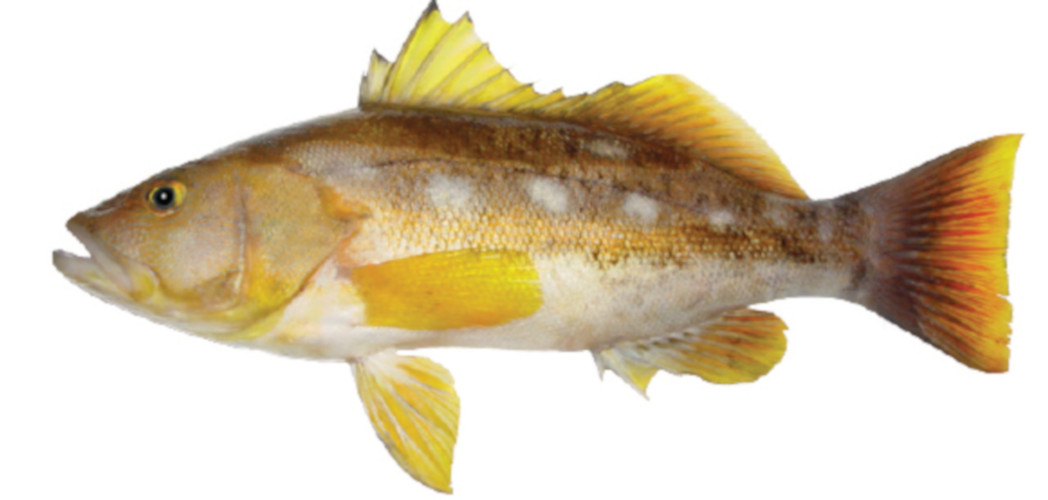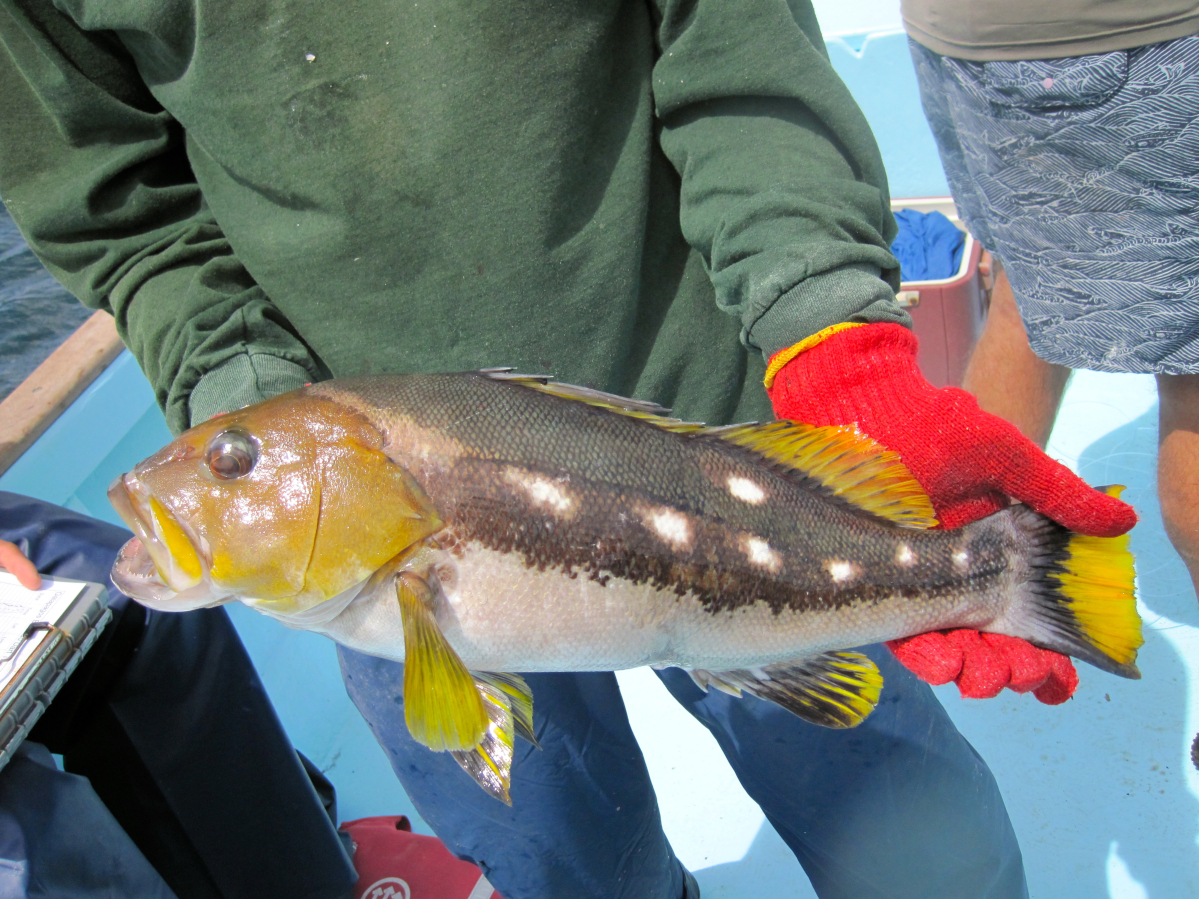Galapagos Species Database
The Galapagos Species Database shares the information about the species from our Natural History Collections.
Paralabrax albomaculatus
camotillo, Whitspotted sand bass



Size: Length of at least 45 cm. Dark yellow-brown to black upper body and forward half of tail; white belly; gold to yellow-brown head, dorsal fin, and rear half of tail fin.
Habitat: Cold, productive waters. From January to June they are found only in depths greater than 10 m, the rest of the year, however, they may be found along the shore in near surface waters.
Domain
Eukaryota
Kingdom
Animalia
Phylum
Chordata
Class
Teleostei
Order
Perciformes
Family
Serranidae
Genus
Paralabrax
Species
albomaculatus
Taxon category: Accepted
Syn.: Gracila albomaculata (Jenyns, 1840), Serranus albomaculatus Jenyns, 1840, fide Appeltans et al. (2010)
Taxon origin: Endemic
- Grove, J.S. Lavenberg, R.J. (1997) The Fishes of the Galapagos Islands. Stanford University Press, Stanford California. 862 pp.
- Humann, P. Deloach, N. (2003) Reef Fish Identification - Galapagos. New World Publication, Inc. Florida USA & Libri Mundi, Quito, Ecuador, 226 pp.
- Appeltans, W. Bouchet, P., Boxshall, G.A., Fauchald, K., Gordon, D.P., Hoeksema, B.W., Poore, G.C.B., van Soest, R.W.M., Stöhr, S., Walter, T.C., Costello, M.J. (eds.) (2010) World Register of Marine Species (WoRMS). Available online at http://www.marinespecies.org.
- IUCN (2010) IUCN Red List of Threatened Species. Version 2010.1. <www.iucnredlist.org>. Downloaded on 26 April 2010.
- McCosker, J.E. Rosenblatt, R.H. (2010) The fishes of the Galápagos Archipelago: an update. Proc. Calif. Acad. Sc., Ser. 4, vol. 61, Suppl. II, no. 11: 167-195.
- Gelin, A. Gravez, V. (2002) Lagunas costeras. In: Danulat, E. & Edgar, G.J. (eds.) (2002): Reserva Marina de Galápagos. Línea Base de la Biodiversidad. Fundación Charles Darwin/Servicio Parque Nacional Galápagos, Santa Cruz, Galápagos, Ecuador, p. 119-145.
- Edgar, G.J. Fariña, J.M., Calvopiña, M., Martínez, C. & Banks, S. (2002) Comunidades submareales rocosas II: Peces y macroinvertebrados móviles. In: Danulat, E. & Edgar, G.J. (eds.) (2002): Reserva Marina de Galápagos. Línea Base de la Biodiversidad. Fundación Charles Darwin/Servicio Parque Nacional Galápagos, Santa Cruz, Galápagos, Ecuador, p. 68-97.
- Constant, P. (2007) Marine Life of the Galapagos. The Diver's guide to Fishes, Whales, Dolphins and marine Invertebrates, 307 pp.
- Horton, T. Horton, T., Kroh, A., Ahyong, S., Bailly, N., Boyko, C. B., Brandão, S. N., Gofas, S., Hooper, J. N. A., Hernandez, F., Holovachov, O., Mees, J., Molodtsova, T. N., Paulay, G., Decock, W., Dekeyzer, S., Poffyn, G., Vandepitte, L., Vanhoorne, B., Adlard, R., ... Zhao, Z. (2021) World Register of Marine Species. Available from https://www.marinespecies.org at VLIZ.
- Grove, J.S. Long, D.J., Robertson, D.R. & Victor, B.C. (2022) List of Fishes of the Galapagos Archipelago, Ecuador. Journal of the Ocean Science Foundation, 39, 14–22.
- The IUCN Red List of Threatened Species (2023) The IUCN Red List of Threatened Species. Version 2023-1. Https://www.iucnredlist.org.


